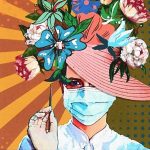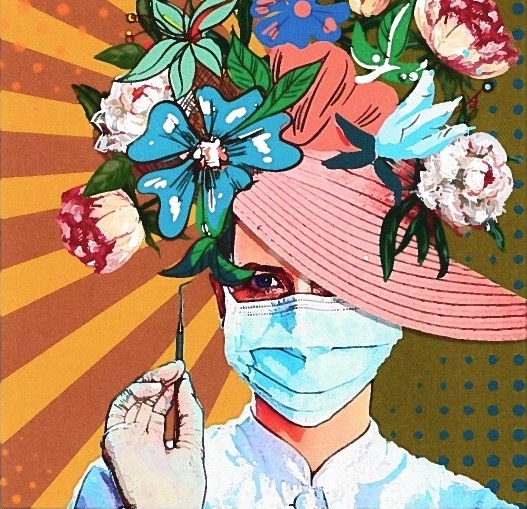Sindecuse Museum Featuring Two New Exhibits7 min read
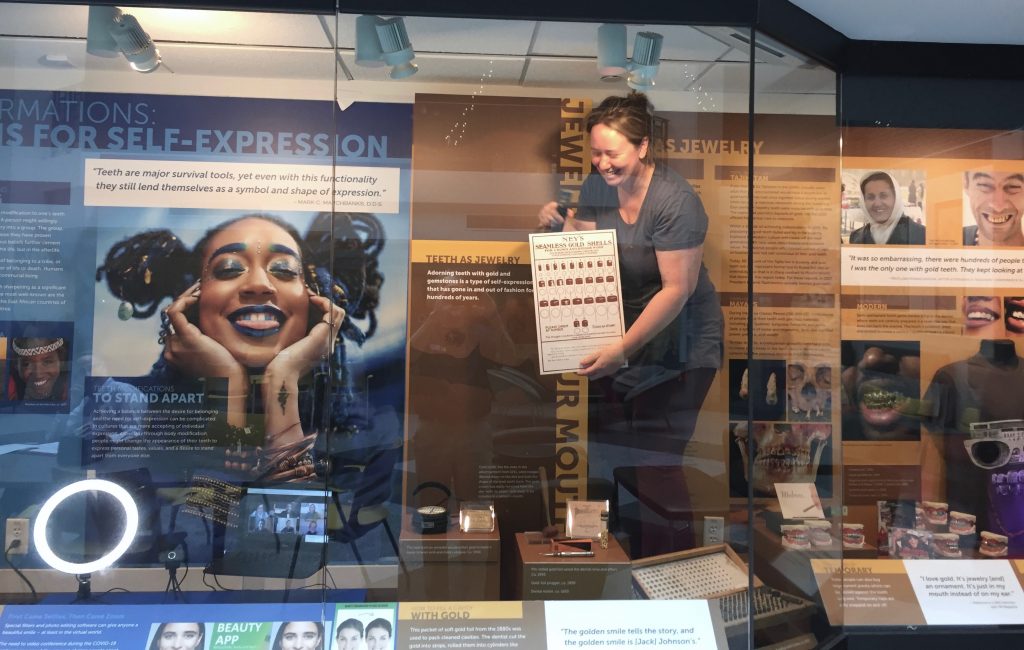
Ann Arbor, Mich., Nov. 9, 2022 – Two new dentistry-related exhibits are gracing the School of Dentistry for the next two years. One looks at the history of people around the world who modify their teeth; the other showcases the artwork of faculty, alumni, students and staff from the dental school.
“Teeth Transformations: Modifications for Self-Expression” is the major new exhibit that opened this summer at the Sindecuse Museum of Dentistry in its main display area in the school atrium. It explores the many ways people across cultures have historically modified their teeth for reasons beyond achieving a better bite. Teeth are altered to improve physical attractiveness, elevate social status, prove spiritual devoutness and conform with, or rebel against, cultural norms – sometimes to the detriment and functionality of chewing and oral health.
Changes to teeth color, including ancient practices of blackening, are shown in contrast to more contemporary desires to achieve unnaturally white teeth. Shaping teeth is featured as well, whether it be veneers and bonding for perfection, or filing, notching and sharpening for various reasons. The exhibit juxtaposes the ancient Mayan practice of inlaying gems onto the surface of teeth with some of the adornments used today – like adding a tiny Block M to indicate your university loyalties or a flashier gold “grill” to attract even greater attention.
“The design and content of this exhibit make this a particularly relatable and engaging display, especially for the many students and young people who visit our clinics,” said Tamara Barnes, curator of the Sindecuse Museum.
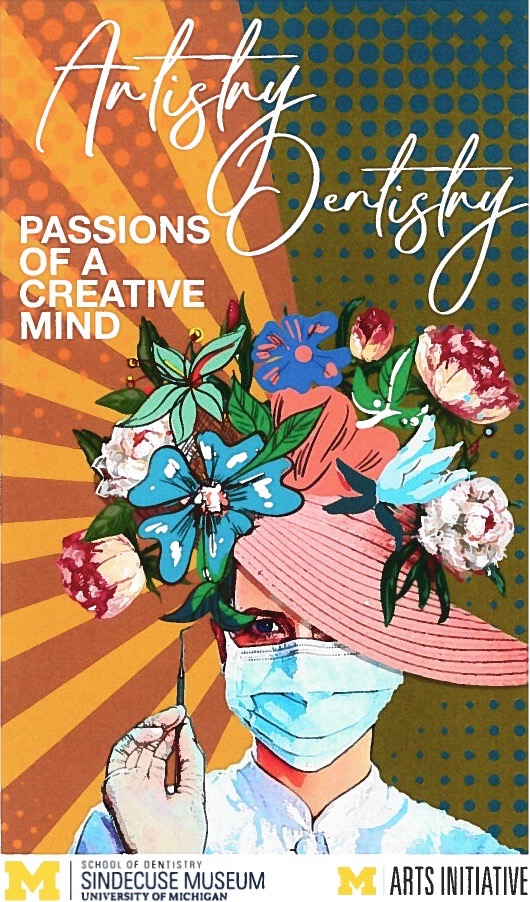
The second new exhibit – “Artistry/Dentistry: Passions of a Creative Mind” – features art submitted by members of the School of Dentistry community. The manual dexterity and skill required to practice dentistry necessitates a creative mind, leading many in the dental community to practice art in various ways outside the dental office. The exhibit includes paintings, photographs, book illustrations, sculpture, wood-carving and mixed media. An opening reception on Nov. 4 also featured performance art with a drum solo.
About 30 artworks from 21 artists were selected for the exhibit. Their work is displayed in six exhibit areas on the first and second floors of the dental school.
Artwork for a children’s story by Dr. Sue Cleereman, a 1986 graduate of the dental school now retired, was chosen for the exhibit. Her inspiration came during an early-morning drive with her young daughter in the 1970s. They were traveling an oft-used road and her daughter was looking for horses that usually grazed along the road. “Where are the horses?” she asked. Cleereman answered, “Asleep, in bed.” The brief exchange prompted Cleereman to put together the words for a story in 1979 – “Horses and Chickens and Cows and Pigs” – but it wasn’t until last year, in retirement, that she finished a series of watercolor images to go with the words. The first part of the story shows how a little girl responded to the conversation by imaging animals asleep in comfortable beds with blankets and pillows like people use. But then she learns that horses sleep standing up in stalls, chickens roost in coops, cows sleep on the ground and pigs get muddy in pig styes. So the little girl dreams that when she grows up she will make sure animals have comfortable beds and blankets just like people have.
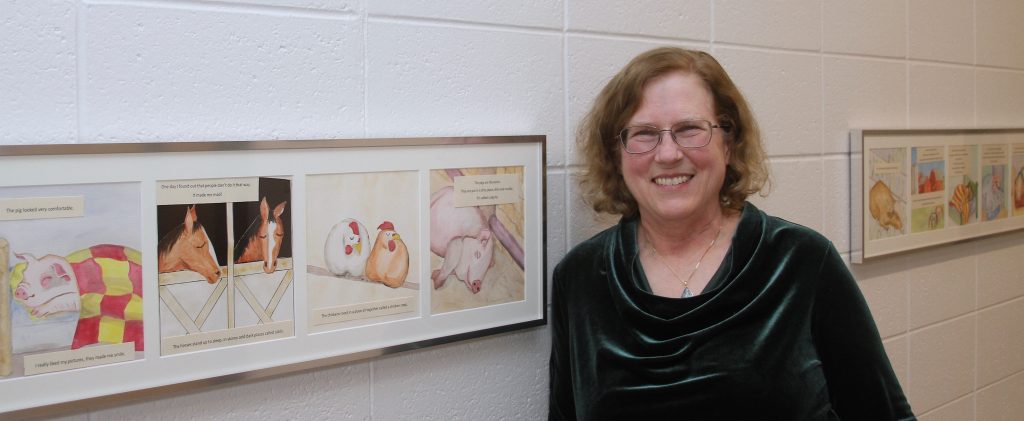
At this point, Cleereman’s creation is a series of water color panels with the story’s words overlaid on the pages. She is investigating ways to have it published in book form. Being included in the dental school exhibit was thrilling, she said. “Art has always been part of my life. This was such an incredible opportunity. I was very careful to get my artwork entered into this exhibit before the deadline. It seemed that my art was a perfect fit for the idea that dentists are artistic. I have been smiling ever since.”
Sindecuse Collections Coordinator Adam Johnson, asked by Barnes to guest-curate an exhibit of his choosing, decided to create one highlighting the artistic skills of the dental community. “I wasn’t sure what the response would be when we called out for submissions, but the reaction was overwhelming and we had so much to choose from,” Johnson said. “It was my intent to both feature the diversity of the artistic talent in our community, but also bring students, faculty, alumni, and staff together and I think that we have been able to do that through this exhibit.”
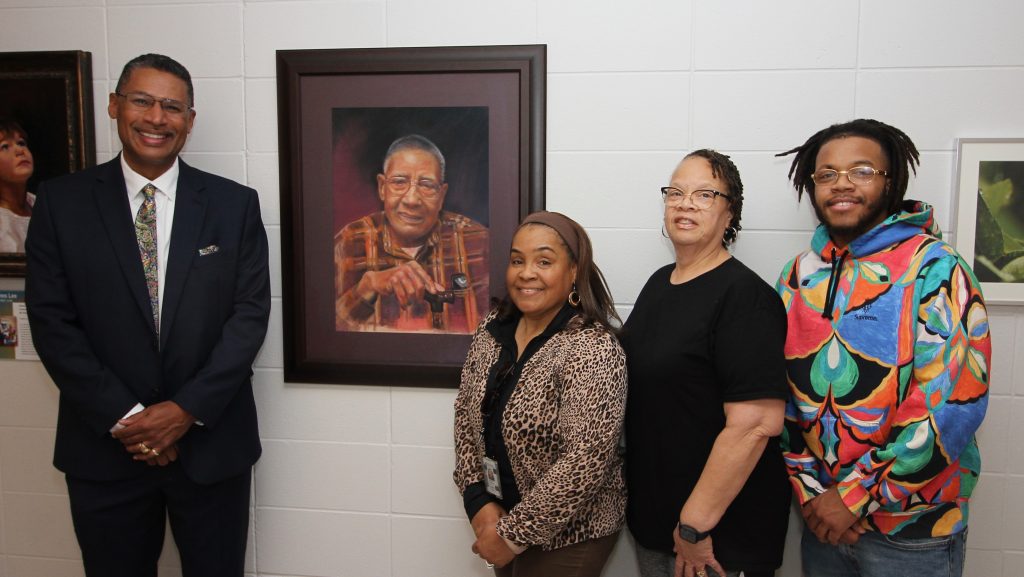
Representatives from the U-M Arts Initiative helped promote the event and joined the artists, members of the dental school community and other guests who attended the opening reception.
Both exhibits will be displayed through 2024. The new exhibits and other museum spaces can be viewed at the School of Dentistry free of charge Monday-Friday from 8 a.m. to 5 p.m.
The Sindecuse is one of only a few museums throughout the world devoted to preserving and exhibiting the history of dentistry. It was created in 1991 with a gift from Dr. Gordon H. Sindecuse, a 1921 graduate of the U-M School of Dentistry who had practiced for 30 years in Kalamazoo, Michigan.
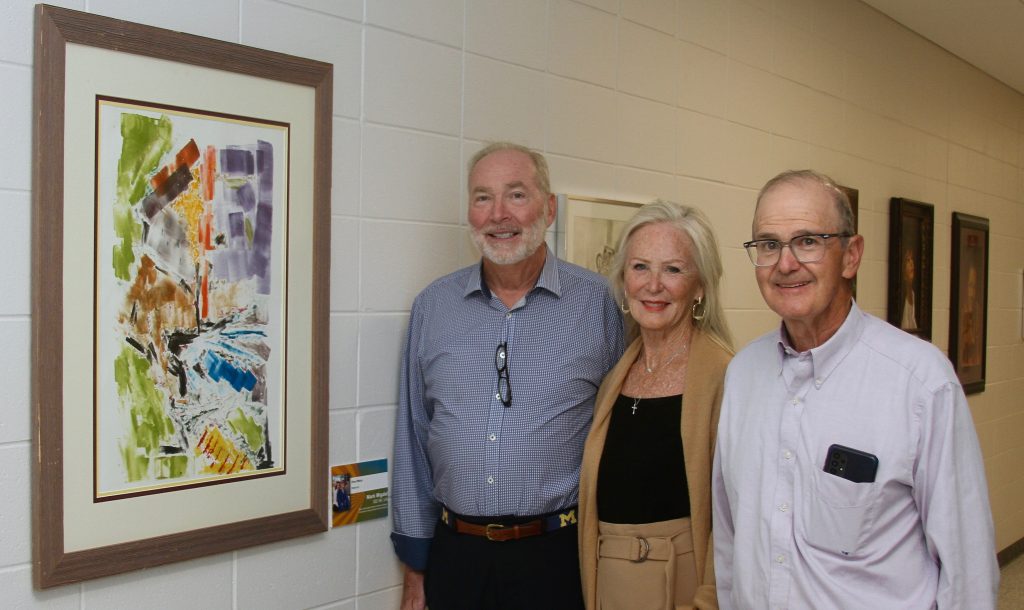
###
The University of Michigan School of Dentistry is one of the nation’s leading dental schools engaged in oral healthcare education, research, patient care and community service. General dental care clinics and specialty clinics providing advanced treatment enable the school to offer dental services and programs to patients throughout Michigan. Classroom and clinic instruction prepare future dentists, dental specialists and dental hygienists for practice in private offices, hospitals, academia and public agencies. Research seeks to discover and apply new knowledge that can help patients worldwide. For more information about the School of Dentistry, visit us on the Web at: www.dent.umich.edu. Contact: Lynn Monson, associate director of communications, at [email protected], or (734) 615-1971.

